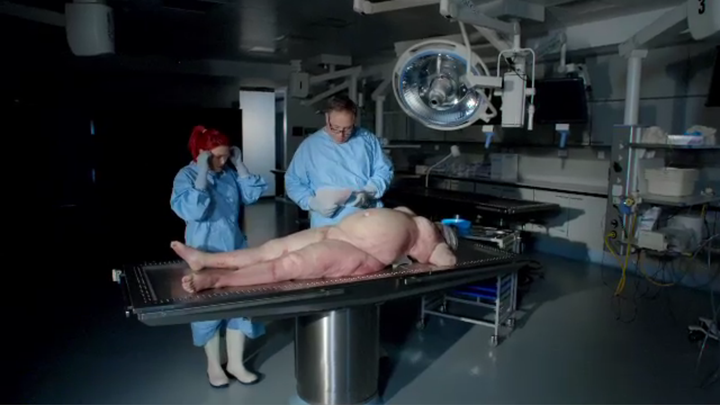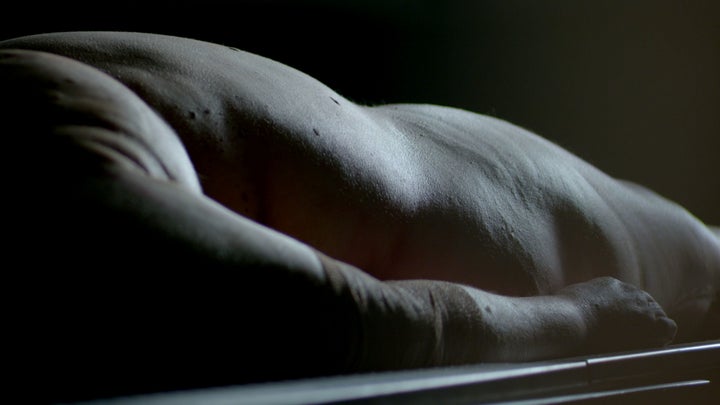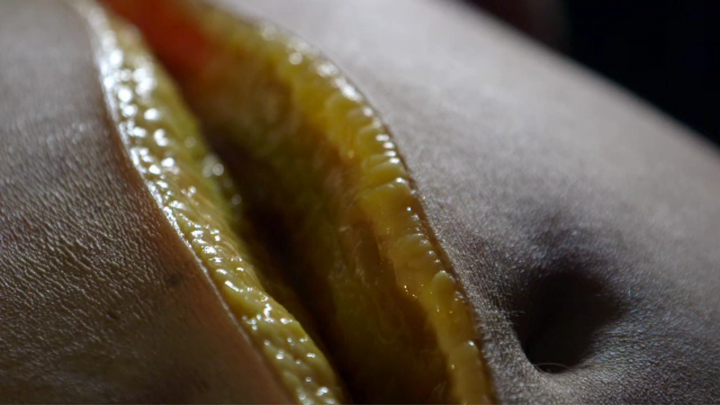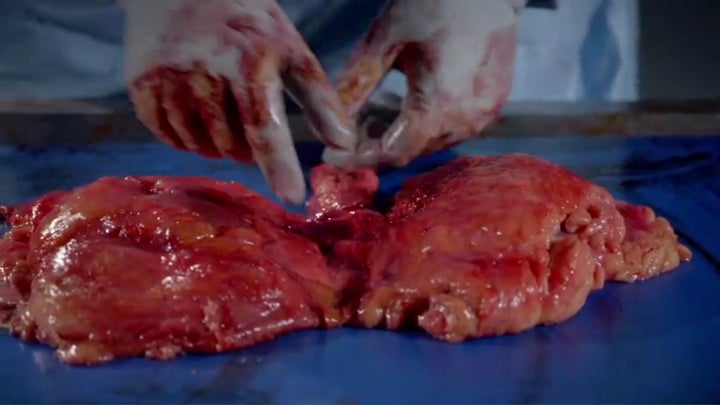Warning: This article contains graphic images of a post mortem examination.
We all know what having large amounts of fat does to the appearance of our bodies on the outside. But a new BBC Three documentary shines a light on the impact obesity has under our skin.
The programme includes the first televised full post-mortem, on an obese woman whose body was donated to medical science.
The unnamed woman died in her early 60s and weighed almost 17 stone at 5ft 5”.
Like a quarter of people living in the UK, she was considered to be clinically obese.

The woman who donated her body died of heart disease, which is just one of the associated health risks of obesity.
During the programme, Dr Mike Osborn, a consultant pathologist, and Carla Valentine, a senior anatomical pathology technologist, complete a 12-hour dissection on the body.
“The topic of obesity is a huge problem and it’s something that I get to see quite a lot, but it’s not something that I get to study in depth,” Valentine says.
Dr Osborn adds: “Obesity is very much there, it’s seen but I think it’s very poorly understood.
“Making this film is a way of exploring that and allowing a broader public to learn about the problems that are associated with obesity.”

After a quick external examination, Valentine starts the full post-mortem by cutting one deep, continuous line from the based of the neck to the top of the pubis.
As she opens up the body, you can clearly see large quantities of yellow fat under the skin.
“There is a very large amount of fat here and the reason it makes it so difficult is that it actually makes it greasy, it feels very much like butter,” Valentine says, as she struggles with the knife.
There’s a particularly large amount of fat on the front of the chest wall and around the abdomen.

The experts then go further into the body to assess the impact obesity has had on organs.
Unsurprisingly, they discover a large amount of fat around the woman’s heart, which undoubtably contributed to her heart failure.
But they also discover she was at risk of another potentially fatal disease - liver failure.
She has an “extremely enlarged liver” due to the added fat, a common sign of obesity.
“Fatty liver causes damage to the liver and can lead on to cirrhosis [scarring of the liver],” Dr Osborn says.
“It can actually lead on to cancer as well...there’s multiple ways it can lead to the death of a patient.”
Dr Osborn points out that fat isn’t always a bad thing. Every one will have fat, regardless of how thin a person is because fat plays an important role in protecting organs. However, when there’s “too much fat” it can start to cause a problem.

The pair also discover the woman has a large amount of additional fluid in her lungs, which will have resulted from her heart troubles and affected her breathing.
“The is what we call pulmonary edema, this is what is basically heart failure fluid,” Dr Osborn explains.
“This is a watery fluid that’s collected because of this lady’s heart failure.”
Finally, the experts find the woman’s kidneys have scarring and pot marks, which are usually associated with high blood pressure.
The post-mortem is a stark reminder that obesity changes far more than our appearance, but the good news is making healthy lifestyle changes can help reverse many of these side effects.
Visit the NHS website for tips on weight loss and tackling obesity.
‘Obesity: The Post Mortem’ is now available to watch on BBC iPlayer.
